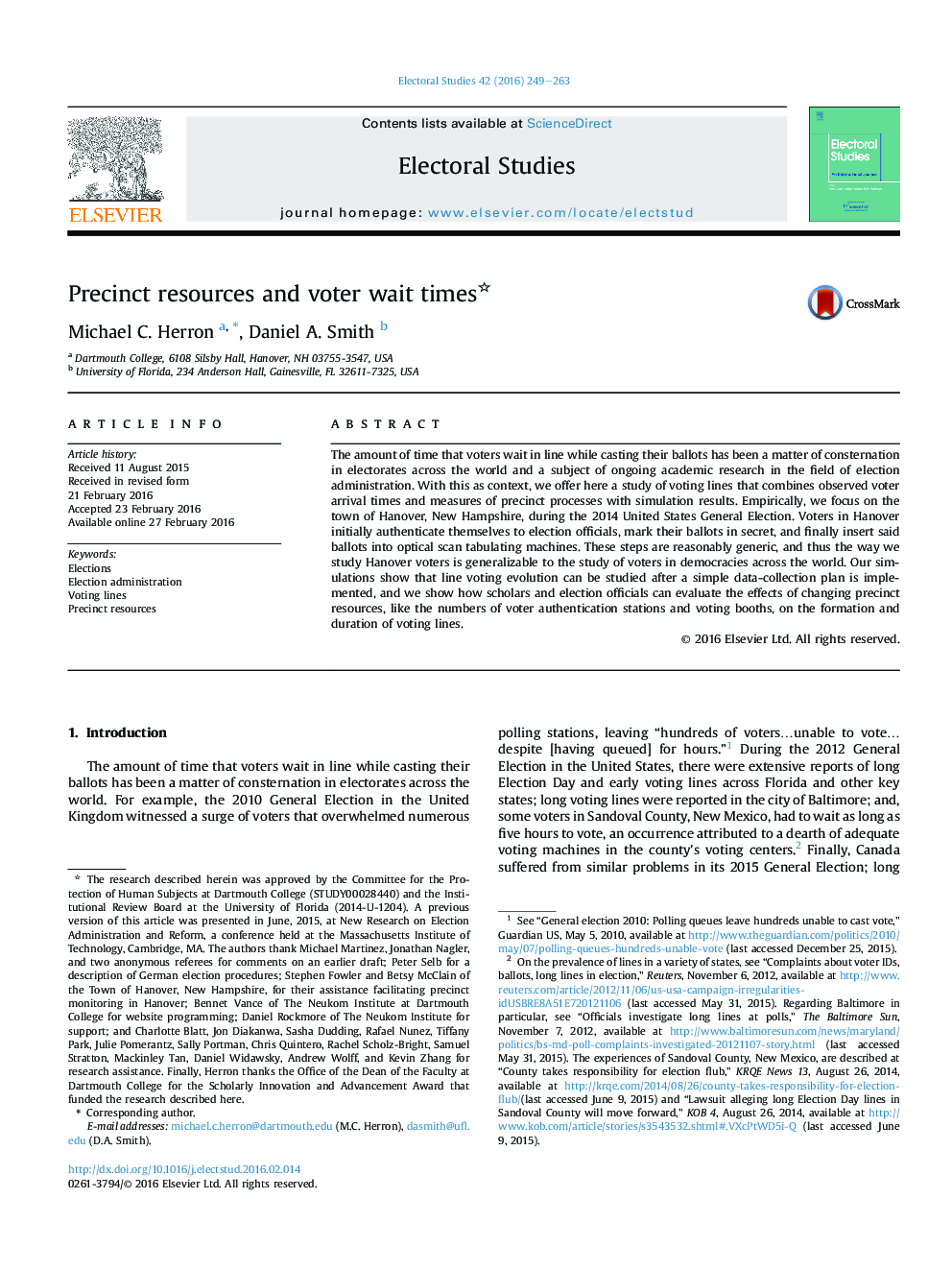| Article ID | Journal | Published Year | Pages | File Type |
|---|---|---|---|---|
| 1051690 | Electoral Studies | 2016 | 15 Pages |
•Voting lines are of interest worldwide to scholars and voters.•Long lines can diminish electoral legitimacy.•We propose a method for studying lines with observed data and a simulation.•The method is applied to the United States 2014 General Election.•Precinct resources affect lines, and our method can be extended to jurisdictions across the world.
The amount of time that voters wait in line while casting their ballots has been a matter of consternation in electorates across the world and a subject of ongoing academic research in the field of election administration. With this as context, we offer here a study of voting lines that combines observed voter arrival times and measures of precinct processes with simulation results. Empirically, we focus on the town of Hanover, New Hampshire, during the 2014 United States General Election. Voters in Hanover initially authenticate themselves to election officials, mark their ballots in secret, and finally insert said ballots into optical scan tabulating machines. These steps are reasonably generic, and thus the way we study Hanover voters is generalizable to the study of voters in democracies across the world. Our simulations show that line voting evolution can be studied after a simple data-collection plan is implemented, and we show how scholars and election officials can evaluate the effects of changing precinct resources, like the numbers of voter authentication stations and voting booths, on the formation and duration of voting lines.
